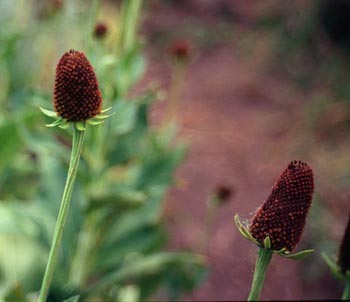Western Coneflower

Common Name(s):
Western Coneflower
Scientific Name:
Rudbeckia occidentalis Nutt.
Scientific Name Synonyms:
None Known
Symbol:
RUOC2
Description:
Life Span: Perennial
Origin: Native
Growth Characteristics: A distinctive and well know plant, western coneflower can grow to six feet tall. It flowers during the summer months.
Flowers: A dark brown cone-shaped head which flower without the usual ray flowers (petals). They are said to look like a sunflower which has lost it’s petals. Tiny flowers that mature on the dark cone are equally dark except for the yellow that develops briefly at the time of pollen release.
Leaves: Broad, coarsely toothed, alternate leaves.
Stems: Tall, leafy, coarse stems which can be glabrous or variously haired.
Roots: Grow from a course rhizome.
Ecological Adaptions:
Found in moist mountain meadows, mountain brush, aspen, spruce-fir, and grass-tall forb communities at 7000 to 10400 feet in elevation.
Soils: Moist
Associated Species: Fendler’s meadowrue, sweet anise, cow parsnip, aspen
Uses and Management:
Western coneflower is often grazed by sheep after frost. The heads or “cones” seem to be preferred over the foliage, particularly by horses.

